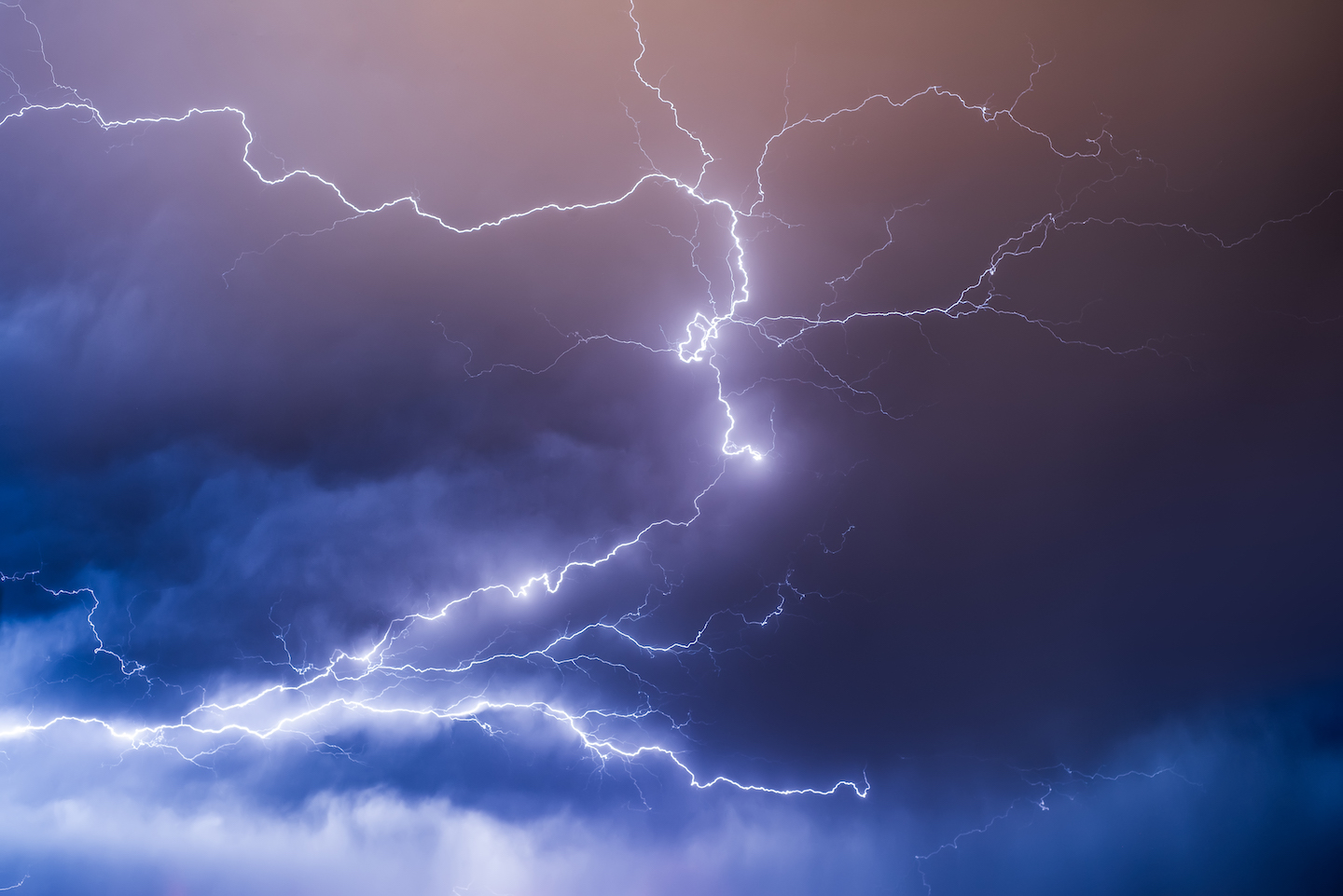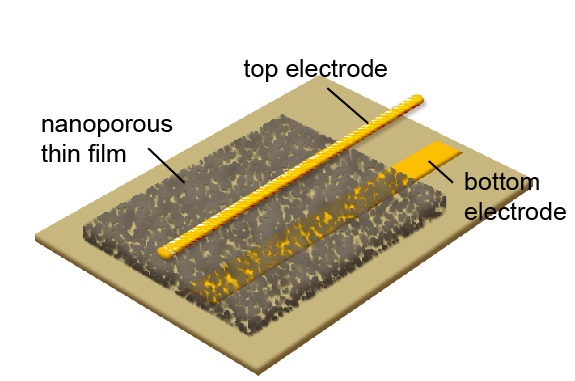New device can harvest clean energy from humid air anywhere
Unlike solar power, this electricity is available day or night

Devices that draw power from humidity could supply power when solar energy is not available.
Senez Studio/Moment/Getty Images
Share this:
- Share via email (Opens in new window) Email
- Click to share on Facebook (Opens in new window) Facebook
- Click to share on X (Opens in new window) X
- Click to share on Pinterest (Opens in new window) Pinterest
- Click to share on Reddit (Opens in new window) Reddit
- Share to Google Classroom (Opens in new window) Google Classroom
- Click to print (Opens in new window) Print
By Laura Allen
This is another in our series of stories identifying new technologies and actions that can slow climate change, reduce its impacts or help communities cope with a rapidly changing world.
Imagine a device that could make clean electric power anytime, anywhere, out of thin air. It’s an old idea. But scientists have new data to show they’re on the way to at last making it a reality.
Using a new device, the researchers harvested electricity from humidity in the air. It wasn’t a lot of electricity. But it was enough to show the process can work. If this new device can be scaled up, it might someday turn air into clean power all day, every day, rain or shine.
Scientists have been trying to plug into the vast power source of Earth’s atmosphere for centuries. In his famous 1752 experiment, Benjamin Franklin used a kite to try and collect electricity from a cloud. Nikola Tesla, a 19th century Serbian American inventor, also tried to harness electricity from the skies.
“The air actually contains a lot of electricity,” says Jun Yao. He’s an electrical engineer at the University of Massachusetts Amherst. In fact, he notes, our atmosphere holds enough power to meet all human needs, many times over.

Thunderstorms offer a glimpse of that immense potential power. Clouds are full of water molecules. Each carries a tiny electric charge. During a storm, water droplets move around inside their cloud. Over time, the top of the cloud becomes positively charged. Its bottom becomes more negatively charged. When this charge difference gets large enough, electrons zip from the top of the cloud to the bottom — as lightning.
The new device works a bit like a tiny cloud, explains Yao. His team’s technology taps into the air’s humidity. This creates a charge difference between the top and bottom of the device. That difference is big enough to harvest from those water molecules a small flow of electrons — that is, electricity.
Beyond bacteria
Yao’s team started to work on pulling electricity from air in 2020. They discovered a type of bacteria that could constantly generate electricity from humidity. The researchers used proteins made by those bacteria to build a system. But Yao suspected that relying on the microbes would limit this system’s widespread use.
What if they could make their system work without the microbes? Were there other materials with the same humidity-harnessing property? That idea became the inspiration for the new invention.
The researchers tested materials from both living things and nonliving objects. It turned out that many materials can harvest power from the air, such as silk or tiny fibers from wood. Yao believes such materials could open up a new field of clean energy production.
Materials that can turn humidity into electricity have one thing in common. They’re riddled with tiny holes, or pores. Each pore is no wider than about 100 billionths of a meter (around 40 times the width of a strand of DNA).
That size causes water molecules to collect on the outside of the material. It also allows a few to pass through the tiny pores. So, when the bottom side of the material is enclosed, it ends up with fewer water molecules than the exposed top.
Because each molecule of water has a tiny charge, having many more water molecules on the top of the material than on the bottom creates a charge imbalance. This encourages electrons to flow from the top to the bottom through nanowires. The electric current that forms could be collected in a battery or used to power a device. The more humid the air, the more water molecules stick to the material — and the more electricity it can make.

Yao’s group tested the energy-producing abilities of five materials. These included wood and silk fibers. A carbon-based material called graphene oxide and a polymer called PEDOT also were tested. So was yet another type of microbe. Each had tiny, 100-billionth-of-a-meter sized pores.
All five materials successfully created a small electric current. This showed that any material with the right properties could harvest electricity from the air. The findings appeared May 5 in Advanced Materials.
Right now, such a device can’t charge your cell phone. Its power output is just too tiny — mere millionths of a watt. But Yao’s team is working to make the setup larger and more efficient. They expect it eventually could power a small sensor, such as those used in some medical devices to monitor someone’s health.
The future of air power
It’s important to learn how different materials collect energy from the air, says Svitlana Lyubchik. She’s a chemical engineer at Lusófona University in Lisbon, Portugal. There, she works on the European CATCHER project to capture energy from the air.
Lyubchik praises the new device. But in the end, she says, not all materials can be used to harvest lots of energy. Scientists need the most efficient ones. These systems also should be made sustainably for widespread use, Lyubchik says. She thinks a CATCHER prototype could fill the bill. Their “humidity-to-electricity” system contains panel-like cells made of zirconium oxide. That’s a ceramic commonly used in dental implants.
Already, the CATCHER system can produce about 1.5 volts of electricity from a 4-centimeter (1.6-inch) round device. This is similar to the power output of half a AA battery — and far more than the device made by Yao’s group.
CATCHER’s current goal is to build a 1-cubic-meter (1.3-cubic-yard) panel to produce 10 kilowatt hours of power a day. Then, each panel could power an electric stovetop for about 10 hours — or run about 10 loads in a dishwasher. The European team hopes such a device could be widely available within 10 years.
Both Yao’s system and the CATCHER device use “very interesting technology,” says Amit Chakraborty. And this tech “certainly calls for further exploration.” Chakraborty is a physicist who works on renewable energy technologies. He’s based at the National Institute of Technology Durgapur in West Bengal, India.
Being able to tap into humid air for electricity could provide continuous power, he says. This, he notes, is something that solar and wind power struggle with.
The big question for Chakraborty is about how to build these projects up to a truly useful size. For air power to supply renewable energy to homes or power plants, it would need to pump out thousands or millions of watts.
Meanwhile, Yao and Lyubchik look forward to seeing where other scientists may take this technology. An air-powered charging pack beneath a desk? Paint that can generate power on the side of a house? Huge arrays of air-harvesting panels side by side with solar and wind farms? To them, the sky is the limit.
This is one in a series presenting news on technology and innovation, made possible with generous support from the Lemelson Foundation.







